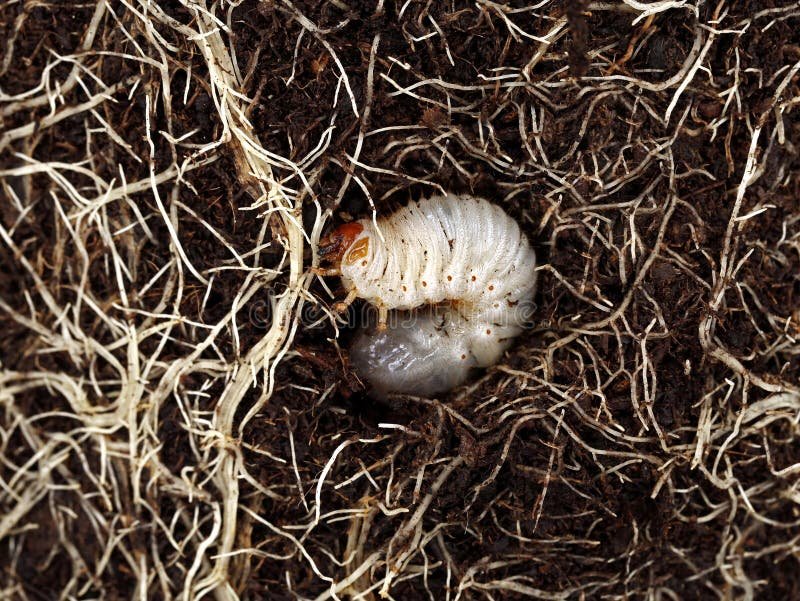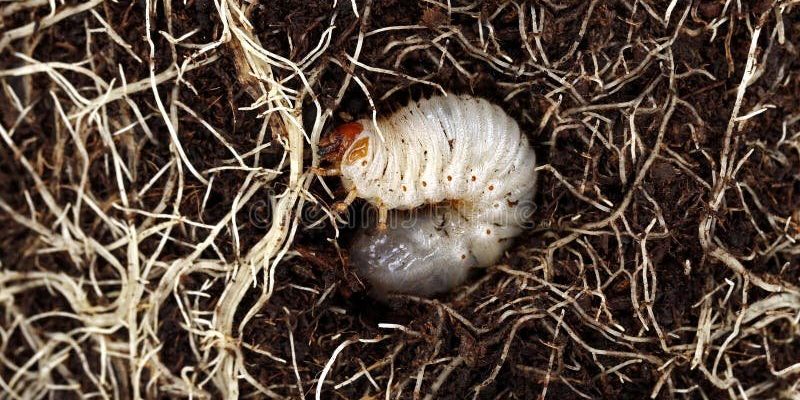
So, how deep do grub worms live in the soil? Honestly, it’s a bit of a mixed bag. Depending on factors like the species of grub and environmental conditions, these guys can dig anywhere from a few inches to several feet deep. Understanding their depth can help you protect your lawn and garden from their sometimes-destructive feeding habits. Let’s dive into the soil layers and explore how deep grub worms really go!
What Are Grub Worms?
To kick things off, let’s clarify what we mean by “grub worms.” Grub worms are actually the larvae of beetles, like the Japanese beetle or the June bug. They tend to be plump, creamy-white, and curled up in a C-shape. You might be wondering why you should care about these little critters. Well, they’re commonly found in soil, and they can either be helpful or harmful based on their population.
These larvae feed on roots and organic matter, which can damage lawns and plants if they’re present in large numbers. Unfortunately, many people don’t even realize they have a grub problem until they see patches of dying grass. Understanding where they live can help you recognize and tackle any issues before they escalate.
Soil Layers: Where Grubs Prefer to Live
Here’s the thing: the depth at which grub worms reside depends largely on soil type and moisture levels. In general, they prefer to live in the top 6 to 12 inches of soil, where they can find plenty of organic matter to munch on. This layer is rich in nutrients and has optimal moisture, making it a perfect dining spot for grubs.
However, if the soil gets too dry, or if there’s a particular threat—like heavy rain or extreme temperatures—grub worms might burrow deeper. Some species can go as deep as 24 inches! That’s almost two feet! It’s like finding a creature that can adapt to the changing tides of its environment, ensuring it has what it needs to thrive.
Factors Affecting Grub Depth
Now, you might be curious about what influences how deep grub worms burrow. There are a few key factors at play here:
- Soil Type: Sandy soils drain faster and might push grubs deeper for moisture, while clay soils can hold moisture better, allowing them to stay closer to the surface.
- Moisture Levels: Grub worms love moist soil. If the surface dries out, they’ll dig deeper to find the dampness they crave.
- Temperature: In colder months, grubs can go deeper to escape frost. They tend to stay just below the frost line to survive winter.
Understanding these factors can help you anticipate grub behavior and take measures to keep them in check.
The Life Cycle of Grub Worms
To grasp how deep grub worms live, it’s essential to understand their life cycle. Grub worms go through several stages, starting from eggs laid in the soil by adult beetles. After about two weeks, the eggs hatch, and larval grubs emerge. At this stage, they spend most of their time near the surface, where they can feast on grass roots and organic materials.
As they grow and mature, grubs will remain in the soil for several months. Typically, they’ll begin their descent into deeper soil during the fall to survive the winter. In spring, they’ll move back up to the upper layers to feed again, continuing this cycle. It’s like a seasonal dance of seeking warmth, food, and safety in numbers!
How to Detect Grub Worms in Your Soil
If you suspect that grubs are wreaking havoc in your garden or lawn, knowing how to check for them is vital. Here’s a simple method to figure out if grubs are hanging out in your soil:
1. **Inspect Your Lawn:** Look for patches of brown grass. If the grass pulls up easily and the roots feel thin, you might have grubs.
2. **Dig a Small Hole:** Grab a shovel and dig about 3-4 inches deep in a suspected area. If you find white, C-shaped larvae, you’ve got grub worms!
3. **Count Them:** If you find more than 5-10 grubs in a 1 square foot area, they might be a problem, and it’s time to take action.
This method doesn’t require a degree in entomology! With a little digging, you can determine if grubs are living too close to home.
Managing Grub Worm Populations
If you discover that grub worms are indeed lurking in your soil, don’t panic! There are ways to manage their populations without causing too much disruption.
– **Beneficial Nematodes:** These tiny worms are natural predators of grubs. When applied to your lawn, they can significantly reduce grub populations.
– **Milky Spore:** This is a naturally occurring bacterium that targets Japanese beetle grubs. It can take a while to work but is quite effective in the long run.
– **Cultural Practices:** Maintaining a healthy lawn through proper watering and aeration can make it less inviting for grubs, encouraging them to stay away.
By being proactive, you can ensure your garden remains lush and free from destructive pests!
Why Understanding Grub Depth Matters
You might be wondering why it’s so crucial to know how deep grub worms live in the soil. Understanding their behaviors and habitat allows you to manage your garden better. If you know they prefer the upper soil layers, you can focus your control efforts there.
Moreover, recognizing the factors that impact their depth helps you take preventive measures. For example, keeping your lawn healthy and adequately watered can help keep grubs at bay. The less inviting your lawn is, the less likely they’ll want to dig in.
In today’s world, protecting your garden from pests is more important than ever. By actively managing grub populations and knowing where they live, you can cultivate a thriving outdoor space.
In conclusion, grub worms might be small, but they can have a significant impact on your soil health and garden vitality. Next time you think about the little wrigglers beneath your feet, remember their burrowing habits and how they can influence your lawn’s landscape. Happy gardening!

